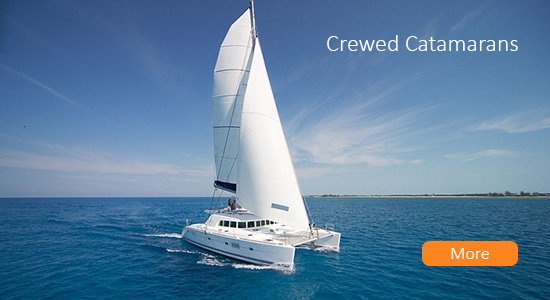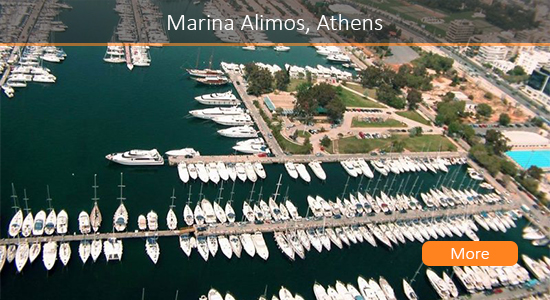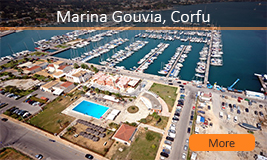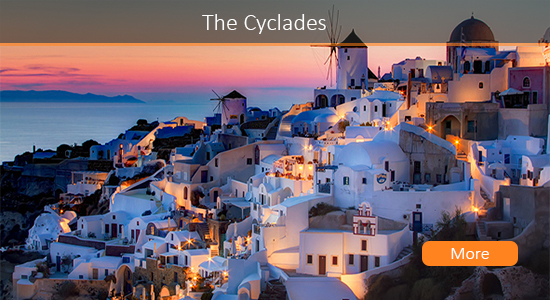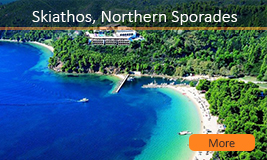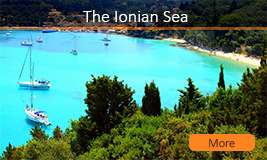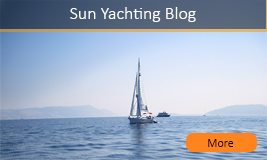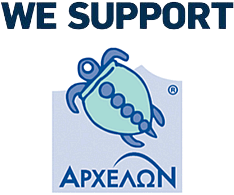SAILING ROUTES / THE SARONIC & ARGOLIC AND EASTERN PELOPONNESE
The Aegean Sea can be accessed from the west around Maleas Cape or through the Corinth Canal, the southeasternmost and northwesternmost limits of the sea area covered in this chapter.
In the Saronic Gulf, yachtsman will come across the greatest concentration of yachts in Greece. Most Greece yacht charter vessels are based in the marinas along the Attica prefecture coast, from where a considerable number of charter companies operate.
The Saronic trail to Aegina, Poros, Hydra and Spetses and to nearby harbors and anchorages are popular sailing routes in Greece, so if you wish to avoid the crowds in the summer stay away from the charter yachts' busiest routes and head for the unspoilt harbors and anchorages of the eastern coast of the Peloponnese.
The area covered in this chapter encompasses three significant historical centers. Mycenae, which is located at the head of the Argolic Gulf, was the main center of the Mycenaean period, which succeeded the Minoans and provided material for Homer's epics. Athens was of course the center of Classical Greece, although it is all too easy to attribute too much to this ancient city and forget the contributions to art, oratory, science and commerce from other city - states all over Greece. Lastly, the fleets of Hydra and Spetses were of key importance in determining the outcome of the War of Independence and both Nafplion (Nafplio) and Aegina were at different times the capitals of the newly liberated Greece.
Experience this sailing trip from a choice of bareboats, catamarans, motor yachts, sailing yachts and all varieties of vessels for your unfogetable sailing in Greece experience.
Get in touch for offers and pricing on all our sailing yachts
Base Marina Alimos Athens
- Alimos - Epidaurus 30 n.m.
- Epidaurus - Poros 20 n.m.
- Poros - Hydra 13 n.m.
- Hydra - Spetses 15 n.m.
- Spetses - Hermioni 10 n.m.
- Hermioni - Aegina 33 n.m.
- Aegina - Alimos 17 n.m.
- -
- -
- -
- -
- -
- -
- -
Base Marina Alimos Athens
- Alimos - Aegina (main port) 17 n.m.
- Aegina - Epidaurus 14 n.m.
- Epidaurus - Poros 20 n.m.
- Poros - Hydra 13 n.m.
- Hydra - Porto Heli 18 n.m.
- Porto Heli - Nafplio (Nafplion) 23 n.m.
- Nafplio (Nafplion) - Leonidion 26 n.m.
- Leonidion - Monemvasia 30 n.m.
- Monemvasia - Kyparissi 18 n.m.
- Kyparissi - Spetses 20 n.m.
- Spetses - Hermioni 10 n.m.
- Hermioni - Aegina (Perdika) 30 n.m.
- Perdika - Cape Sounion (Sounio) 27 n.m.
- Cape Sounion (Sounio) - Alimos 22 n.m.
Base Marina Alimos Athens
- Alimos - Kea 38 n.m.
- Kea - Syros (Finikas) 32 n.m.
- Syros (Finikas) - Mykonos 24 n.m.
- Mykonos - Paros 24 n.m.
- Paros - Serifos 30 n.m.
- Serifos - Kythnos 21 n.m.
- Kythnos - Alimos 42 n.m.
- -
- -
- -
- -
- -
- -
- -
Base Marina Alimos Athens
- Alimos - Kea 38 n.m.
- Kea - Syros (Finikas) 32 n.m.
- Syros (Finikas) - Tinos 18 n.m.
- Tinos - Mykonos 10 n.m.
- Mykonos - Paros 10 n.m.
- Paros - Koufonisia 27 n.m.
- Koufonisia - Ios 17 n.m.
- Ios - Santorini 24 n.m.
- Santorini - Folegandros 27 n.m.
- Folegandros - Milos 30 n.m.
- Milos - Sifnos 22 n.m.
- Sifnos - Serifos 12 n.m.
- Serifos - Kythnos 21 n.m.
- Kythnos - Alimos 42 n.m.
More info about Saronic & Argolic Gulf and Eastern Peloponnese
The relatively tideless waters of the Mediterranean a magnetic variation of just over 2° (2°05'E 1990 (4'E)), enhances your yacht charter in Saronic Islands Greece but there are hazards to navigation in the area.
In the summer, haze can reduce visibility to a mile or two, but rain cleanses the air and improves visibility. When sailing from Athens to Aegina or Poros you cannot identify features until 3 miles or so. When approaching Athens, the smog is something you should be careful of.
While sailing in Greece, and particularly the Saronic Islands and the Argolic Gulf, light early morning fog, which will later be burned off by the sun. The Saronic Gulf has only a few rocks dangerous to boating. Due to the clarity of the water in the Mediterranean, rocks and shallows can easily be spotted.
Deep blue water » good
Deep green water » getting shallow
Lighter green water » beware
Brown water » species of molluscs can be identified.
Care is needed close to local fishing boats in the Saronic Islands as well as in isolated areas to avoid fishing nets wrapped around the propeller of your yacht. Navigation at night while sailing on uncommon routes should be avoided unless you are familiar with the area.
The Saronic area is divided into the coast around Athens and the coast around East Poros and Hydra islands, where winds blow NE.
The "Meltemi" winds begin from July 15th and build up to full strength in August and the beginning of September and eventually die down towards the end of September. During this period, wind force may reach up to 5-6 Beaufort (35 to 40 knots).
In the Argolic Gulf and Hydra Island the wind is SE. The "Meltemi" is strong during lunch time and dies downs at night. The "Katabatic" is wind coming from the mountains of the Peloponnese that reaches speeds up to 30-35 knots and only lasts a few hours. Source: Greek Water Pilot

